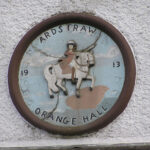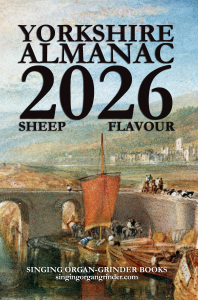2 July 1644: Henry Slingsby of the Royalist York garrison recounts Prince Rupert’s defeat at Marston Moor today, which ends Charles I’s hopes in the north

Richard Ansdell’s “death of Sir William Lambton at the Battle of Marston Moor” (Ansdell 1842).
Henry Slingsby and Daniel Parsons. 1836. The Diary of Sir Henry Slingsby of Scriven, Baronet. London: Longman, Rees, Orme, Brown, Green, and Longman. Get it:
.Excerpt
The prince passed over at Poppleton where the Scots had made a bridge of boats, and followed the Scots in the rear, who were now upon their march towards Marston, and in so much haste as if they meant to march clear away. The prince followed on and made a halt at Marston town, the Scots then marching up the field, the direct way to Tadcaster. But upon the top of the hill they faced and fronted towards the prince, who till now was persuaded that they meant not to give him battle, but to march quite away. Now the prince bestirred himself, putting his men in such order as he intended to fight, and sending away to my Lord of Newcastle to march with all speed. The enemy made some shot at him as they were drawing up into battalio [battle array], but this was only a showing their teeth, for after four shots made them give over, and in Marston cornfields fell to singing psalms. The prince’s horse had the right wing, my Lord Goring the left, the foot disposed of with most advantage to fight, some of them drawn off to line the hedges of the cornfields, where the enemy must come to charge. The enemy’s forces consisting of three parts, the Scots, Manchester, and Fairfax, were one mixed with another. Cromwell, having the left wing drawn into five bodies of horse, came off the coney warren by Bilton Bream to charge our horse, and upon their first charge routed them. They flew along by Wilstrop woodside as fast and as thick could be, yet our left wing pressed as hard upon their right wing, and pursued them over the hill. After our horse was gone they fell upon our foot, and although a great while they maintained the fight yet at last they were cut down and most either taken or killed. Here I lost a nephew, Colonel John Fenwick, and a kinsman, Sir Charles Slingsby, both of them slain in the field. They pursued not, but kept the field as many as were left, for they were fled as fast as we, and their three generals gone, thinking all had been lost. We came late to York, which made a great confusion, for at Micklegate Bar none was suffered to come in but such as were of the town, so that the whole street was thronged up to the bar with wounded and lame people, which made a pitiful cry among them.
Comment
Comment
How Thomas Fairfax survived (Taylor 1883):
In this great Yorkshire battle, which took place July 2nd, 1644, Sir Thomas Fairfax also carried himself with great bravery. He tells us that he must ever remember the goodness of God to him that day, for, having charged through the enemy, and his men going after the pursuit, he stopped to return to his other troops, when unexpectedly he fell into the midst of the enemy’s horse alone; but taking the signal out of his hat, he passed through them again as one of their own commanders. He adds that he escaped the dangers of that field with only a cut in his cheek given him at the first charge, and his horse shot under him in the second. The other generals are said to have all fled the field; and Leven, after a flight of ten miles, was taken by a constable. The principal persons slain among the Royalists were Sir William Wentworth, Sir William Lambton, Sir William Langdale, Sir Thomas Metham, Colonel Eure, and Colonel Slingsby. The number of slain on both sides is said to have been 8,000, out of about 20,000 on each side, though authors vary much in this as well as in other particulars. The countrymen who were commanded to bury the dead gave out that they interred at least 4,150. It is generally believed that the Royalists lost at least 3,000 men; the Parliamentarians would not own to above 300 (or more probably 1,300, if not 2,300) being slain on their side, which is incredible from the circumstances of the fight. Of the Parliamentarians none of note were slain, except Captain Micklethwaite and Major Fairfax, who died of his wounds at York; as did also Charles Fairfax (son of the old General), who was buried at Marston, aged 23.
To the list of notable Royalists slain should be added the scientist William Gascoigne.
A rather less sensational account from a Scottish participant was published the same year (Anon 1832). In the same volume, another Scotch eyewitness records that upon one of the corners of one of the ca. 100 colours taken “was drawn a Lyon, and a Mastiff under, and at the mouth of it, Kinbolton Kinbolt, and beagle out of it priapism; and written above, Quousque abutimini patientia mea. Upon another was drawne, a roundhead, and a hand with an axe, and written on it, Fiat Justicia” (Douglas 1832).
The Battlefields Trust has an excellent page.
Something to say? Get in touch
Original
The prince [Prince Rupert of the Rhine] now as come within three or four miles of York, upon the forest side [Forest of Galtres, to the north], and sends in to my Lord of Newcastle, to meet him with those forces he had in York; and it was upon the 2nd of July 1644 when my Lord marched out with all those forces he had, leaving only in the town Colonel Bellasyse’s Regiment, Sir Thomas Glemham’s Regiment, and my own, which was the City Regiment. The prince passed over at Poppleton where the Scots had made a bridge of boats, and follows the Scots in the rear, who were now upon their march, towards Marston, and in so much haste as if they meant to march clear away; the prince follows on and makes an halt at Marston town, the Scots then marching up the field, the direct way to Tadcaster; but upon the top of the hill they face and front towards the prince, who till now was persuaded that they meant not to give him battle, but to march quite away. Now the prince bestirs himself, putting his men in such order as he intended to fight, and sending away to my Lord of Newcastle to march with all speed. The enemy makes some shot at him as they were drawing up into battalio [battle array], and the first shot kills a son of Sir Gilbert Haughton that was captain in the prince’s army, but this was only a showing their teeth, for after four shots made them give over, and in Marston corn fields falls to singing psalms: the prince’s horse had the right wing, my Lord Goring the left; the foot disposed of with most advantage to fight, some of them drawn off to line the hedges of the cornfields, where the enemy must come to charge. The enemy’s forces consisting of three parts, the Scots, Manchester and Fairfax, were one mixed with another; Cromwell having the left wing drawn into five bodies of horse, came off the coney warren, by Bilton Bream, to charge our horse, and upon their first charge routed them; they fly along by Wilstrop woodside, as fast and as thick could be; yet our left wing pressed as hard upon their right wing, and pursued them over the hill; after our horse was gone they fall upon our foot, and although a great while they maintained the fight yet at last they were cut down and most part either taken or killed. Here I lost a nephew, Colonel John Fenwick, and a kinsman, Sir Charles Slingsby, both of them slain in the field; the former could not be found to have his body brought off, the latter was found and buried in York Minster. They pursued not, but kept the field as many as were left, for they were fled as fast as we, and their three generals gone, thinking all had been lost. We came late to York, which made a great confusion: for at the bar [Micklegate Bar] none was suffered to come in but wuch as were of the town, so that the whole street was thronged up to the bar with wounded and lame people, which made a pitiful cry among them.
551 words.
Similar
 16 June 1644: On Trinity Sunday, Parliament and the Scots breach York’s walls and destroy monastic records with a mine next to St Mary’s Tower
16 June 1644: On Trinity Sunday, Parliament and the Scots breach York’s walls and destroy monastic records with a mine next to St Mary’s Tower 3 January 1638: On the eve of the civil war, Henry Slingsby witnesses Royalist cavalry exercising near Wetherby on Bramham Moor, scene of the defeat of the Percy Rebellion in 1408
3 January 1638: On the eve of the civil war, Henry Slingsby witnesses Royalist cavalry exercising near Wetherby on Bramham Moor, scene of the defeat of the Percy Rebellion in 1408 23 January 1643: Thomas Fairfax, the Rider of the White Horse, captures Leeds from the Beast with the help of Psalm 68
23 January 1643: Thomas Fairfax, the Rider of the White Horse, captures Leeds from the Beast with the help of Psalm 68 23 April 1642: Having promised parliament to safeguard for it Hull’s crucial arsenal, John Hotham tells it how today he shut the gates of Hull to Charles I
23 April 1642: Having promised parliament to safeguard for it Hull’s crucial arsenal, John Hotham tells it how today he shut the gates of Hull to Charles ISearch
Donate
Music & books
Place-People-Play: Childcare (and the Kazookestra) on the Headingley/Weetwood borders next to Meanwood Park.
Music from and about Yorkshire by Leeds's Singing Organ-Grinder.



 Bluesky
Bluesky Extwitter
Extwitter